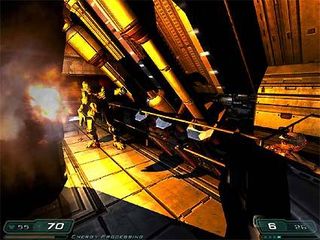THG Graphics Card Buyer's Guide
Intended Use - A Short Overview

The first step in determining your ideal graphics card is to take stock of the primary applications for which you use your PC. If most of your time on the computer is spent using office applications (word processing, spreadsheets), or other 2D software, then the 3D performance of a graphics card won't play a great role in your buying decision.
However, in future operating systems such as Microsoft's "Longhorn", the user interface will make much heavier use of a graphics card's 3D functionality, so 3D performance may be potentially important even for those who do not use 3D applications. For example, to use even the simplest 3D version of the Longhorn interface - which goes by the name "Aero" - full DirectX 9 support and 32 MB of video memory are likely to be the bare minimum graphics card requirements. The grander "Aero Glass" interface version will require DirectX 9 support and 64 MB of video memory!
Of course, there is still some time until Longhorn makes it to the marketplace and a computer near you. And even when it arrives, it will also come with a 2D-only user interface for systems that don't meet the 3D requirements. You can get more info on Microsoft's Longhorn here .
There are measurable 2D performance differences between individual cards and the various chip generations. However, the 2D performance of current graphics processors has reached such a high level overall that these differences won't make a tangible difference in everyday use, for example in a Windows XP environment. Applications such as Word, PowerPoint, Photoshop or Acrobat won't run any faster on a bleeding-edge high-end card than on a mainstream offering. This means that these days, a graphics card's performance is determined nearly entirely by its 3D performance.

Modern games such as Doom3 are very demanding on graphics cards.
Since today's graphics cards differ the most in 3D performance, this is the probably the main factor to look for if you intend to do any gaming on your PC. The variety of different card models from different generations and price brackets is enormous, as are the differences in 3D performance and feature sets. Even if you're more of a casual gamer that only plays a game every now and then, you shouldn't try to save money in the wrong place. After all, gaming time is your free time, and you don't want to ruin it with stuttering or low-detail graphics. Cut too many corners and may end up with more exasperation than entertainment.
The 3D architecture of the card - that is, which generations of which 3D standards it supports - is very important. Usually, adherence to 3D standards is expressed in terms of support for a certain generation of Microsoft's DirectX 3D API, which is updated regularly. We'll talk about this some more later on in this guide. For now, we'd just like to mention that while most DirectX 8 compliant cards will be sufficient for current games, they won't do as well in the most recent and soon-to-come hit games, such as Doom III, Stalker and Half-Life 2.
Stay on the Cutting Edge
Join the experts who read Tom's Hardware for the inside track on enthusiast PC tech news — and have for over 25 years. We'll send breaking news and in-depth reviews of CPUs, GPUs, AI, maker hardware and more straight to your inbox.
If you're looking to replace your motherboard as well as your graphics cards, integrated graphics solutions may be an option for you. Beware, however, that the 3D performance of these solutions is, at best, comparable to that of the slowest add-in cards. As a result, these motherboards are only of limited use to PC gamers. If your focus lies more in the areas of office work and video editing, then they will usually be quite sufficient.
Recently, many companies have begun campaigns to secure a foothold for the PC in the living room. The primary selling point of such a solution is the PC's inherent suitability for video and audio playback. Again, special attention is given to the graphics card here as well. In principle, any graphics card is capable of displaying any video format, but there are major differences between cards in the resulting CPU load on the PC, and the output image quality. If the CPU load is too high when playing high-resolution HDTV videos (for example), there will be noticeable stuttering during playback. Graphics processors also differ in their offered color fidelity, and features such as de-interlacing and scaling. We'll look at this in more detail in section #2.
Current page: Intended Use - A Short Overview
Prev Page Introduction Next Page Technology (Future Proofing)Most Popular

